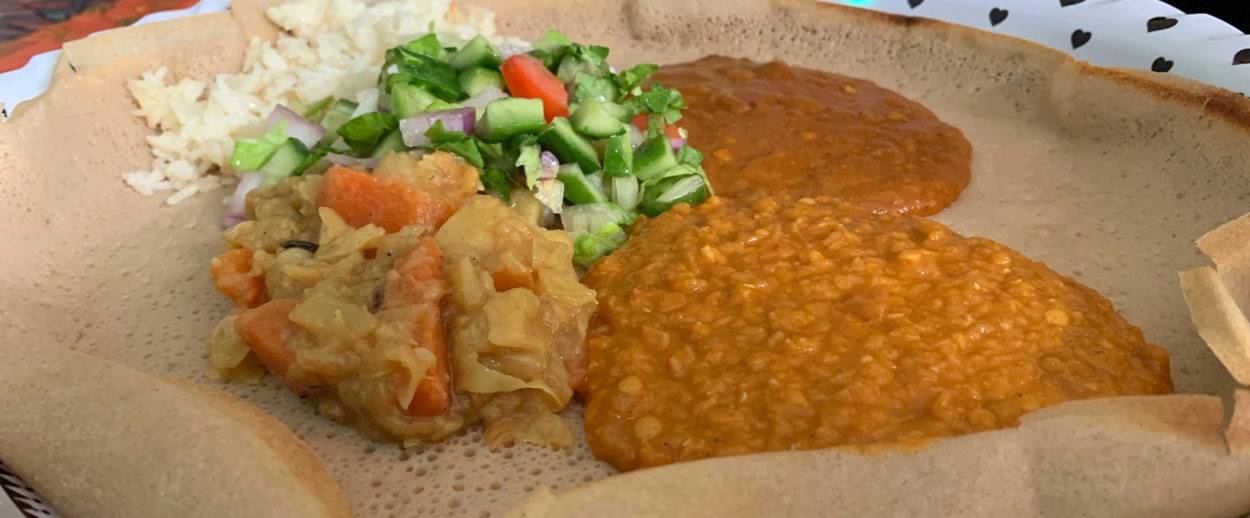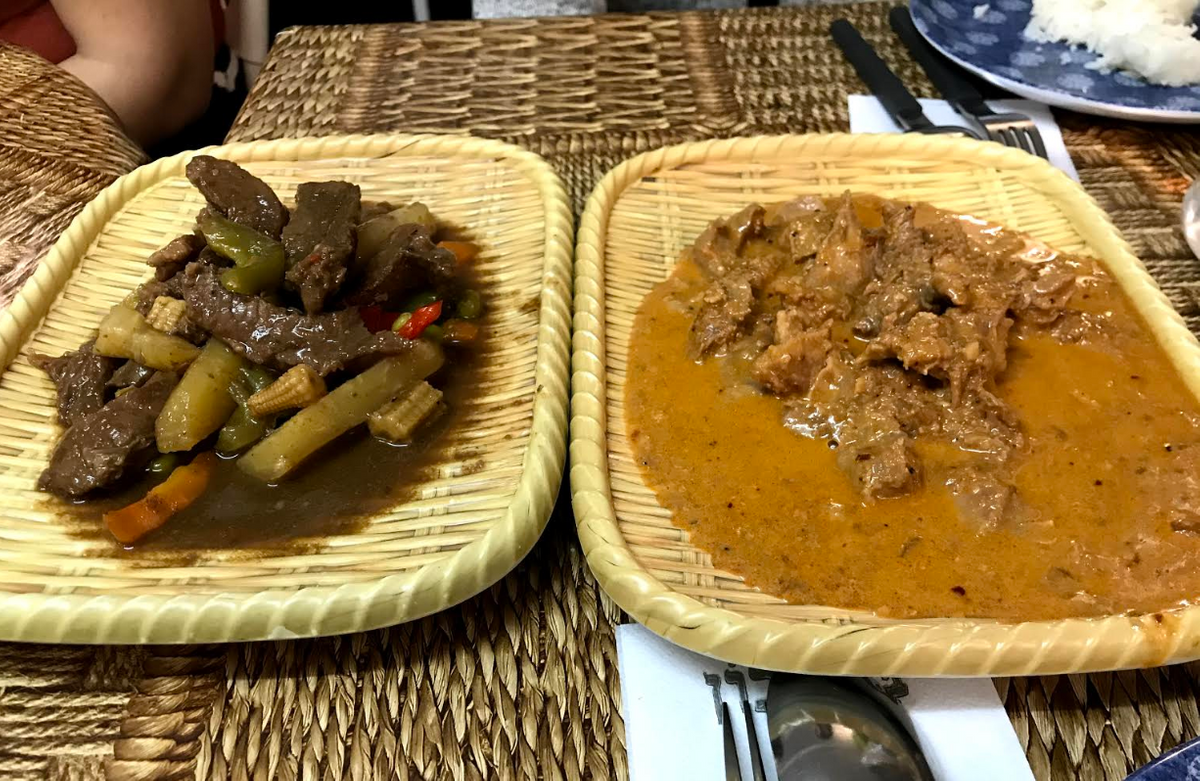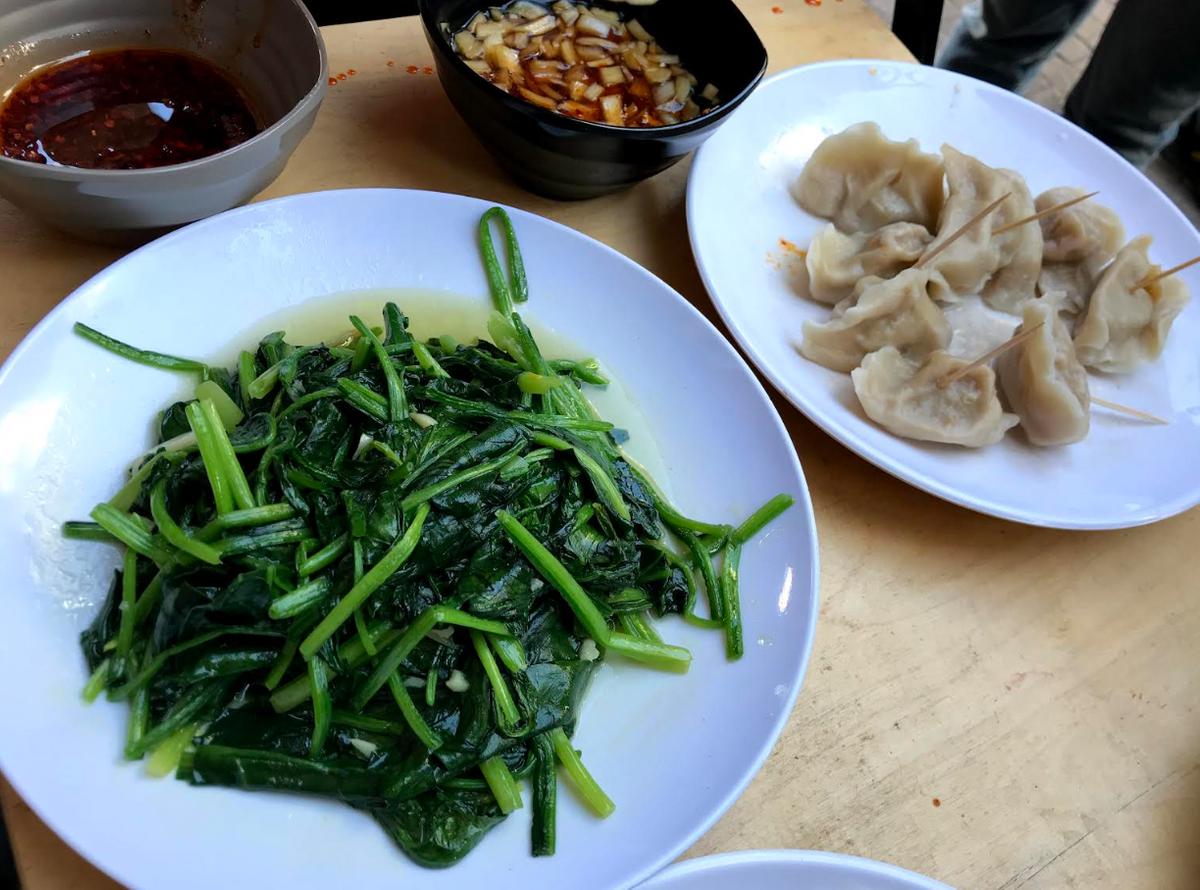Tel Aviv’s Global Menu
Migrant workers and asylum-seekers have brought a world of flavors to the city’s impoverished Neve Sha’anan neighborhood




Neve Sha’anan, in the south of Tel Aviv, is probably the city’s most peripheral and impoverished neighborhood. It is the city’s backyard: a neglected place where forgotten things (or people, in this case) are discarded, but also a place where one can find many a hidden treasure.
These days, when you walk around Neve Sha’anan, you don’t see many Israelis—you see more Eritreans and Sudanese, West Africans, Indians, Nepalese, Sri Lankans, Filipinos, Chinese, Ukrainians, and so on. Some of these are migrant workers, while others are asylum seekers. The few Israelis who live in the neighborhood are often poor and elderly.

The story of how Neve Sha’anan—which was built in 1921 and used to be a nice neighborhood—turned into a slum, starts in the 1950s: The Old Tel Aviv Central Bus Station opened in the neighborhood in 1941 and businesses around it were thriving. In the early 1950s, when the station became too small, platforms were added in the neighborhood’s streets, hurting the residents’ quality of life. Things got progressively worse when a decision was made to open the New Tel Aviv Central Bus Station, in the same neighborhood. The new station, which is the second largest bus station in the world, took 26 years to build. Meanwhile, the people in the neighborhood lived with the “temporary” platforms on their streets for decades. Neve Sha’anan was already a shoddy place by the 1970s and the opening of the new station in 1993—an unsightly monstrosity—just made things worse. The area quickly became a hub of crime, drugs, prostitution, and homelessness. The new station filed for bankruptcy in 2012, but not before a bat colony took over one of many abandoned corners of the station.
Many apartments in the neighborhood were abandoned, too, which is what attracted the new migrant population. Since the outbreak of the first intifada in the late 1980s, the labor force in Israel has changed drastically. Since Palestinians were often no longer the ones to build Israelis’ houses or work in Israelis’ fields, in the early 1990s migrant workers from various corners of the world started to be flown in to do so. The numbers increased dramatically after the second intifada, and many of them found themselves in Neve Sha’anan, where landlords with empty apartments were willing to rent their places to large groups of migrant workers.
In the 2000s, East African asylum seekers, fleeing the dire situations in their home countries of Eritrea and Sudan, found themselves in Neve Sha’anan as well. Nowadays many of them are leaving, because of the neighborhood’s gentrification and rising prices, as well as the fact that they can find a better life in other places, like Germany, Scandinavia, and Canada. But despite the growing gentrification, Neve Sha’anan is still full of businesses catering to different ethnic groups of migrant workers and asylum seekers: grocery stores with imported goods, restaurants, cafés, bars and taverns. Some have business licenses, others do not. Some are frequented by Israelis as well, but the vast majority are not.
*
Living in Tel Aviv, I have passed through Neve Sha’anan many times, but like most other Tel Avivians, I don’t know it very well. In order to change this, I joined David Cohen’s D-Tour tour, which has been showing people around Neve Sha’anan and other locations for about three years now (most of the tours are conducted in English). “Neve Sha’anan was the first tour I ever did,” Cohen told me. “I remember growing up in Tel Aviv when there were no immigrants here at all. I grew up and suddenly Israel was full of immigrants. I was curious—how did this happen? Also, I lived for a long time close to Neve Sha’anan, in Kfar Shalem, and I wondered why specifically Neve Sha’anan became an immigrant city. There are many other low-income neighborhoods in the south of Tel Aviv—why Neve Sha’anan? These questions ignited my investigation which eventually led to this tour being born.”
Our first stop, on a Friday morning tour in December, was a Filipino restaurant called Kainan @ Ihawan, where we ate fish in coconut sauce and fried pig’s ears on a skewer, among other local favorites, and drank Filipino Red Horse beer. Next, we went to an Eritrean restaurant, which like many of the local eateries has no name. One of the things Eritreans miss most about home is their national dish, injera, which many Israelis are familiar with from Ethiopian cuisine. Injera is a large spongy sourdough flatbread, made out of the highly nutritious and gluten-free teff flour. It is served with scoops of different stews (such as a lentil stew called adas or a chickpea/broad bean stew called shiro and salad on top, which you scoop up with pieces of the injera. We also sampled delicious Eritrean spicy bread salad called fit-fit, typically served with yogurt (or, as they serve it in Israel, sour cream). It is made out of shredded bread, with clarified butter and berbere spice mixture. Boaz Wolf, one of the people on the tour, also fell in love with it. “The fit-fit was amazing,” he told me. “I loved the whole tour. I was always intrigued by the area and thought that there is a whole world that we don’t know about around the Central Bus Stations, and on this tour I found out that I was right! It’s an area full of cultural and culinary treasures, which made me even more curious and wanting to discover more.”
“I make Eritrean food because it’s what I know how to make—it is what I learned to cook in Eritrea,” said Senit Tamir, co-owner (with her brother), as well as chef and manager of the Eritrean restaurant. The tours, Tamir added, bring in new customers—including Israelis eager to try injera, lentil stew, and other Eritrean dishes: “Many Israelis like it, especially vegetarians and Israelis who like health food.”
After the Eritrean restaurant, we visited an Eritrean-style hamara, a makeshift pub or café. We entered through a small juice stand, offering African shakes of avocado and tropical fruits, and found ourselves in a dark bar-café illuminated by Christmas lights, where African customers sat on plastic chairs, playing cards, smoking nargila, drinking beer or coffee, and watching soccer on big screens. There we experienced a traditional East African coffee ceremony, called bunna: Coffee with ground ginger and cardamom was poured into small cups and served with sugar-sweetened popcorn and a stick of incense on the side.
The hamara is just one example of the places where immigrants hang out with their friends and relax. Migrant workers who don’t live in Neve Sha’anan, but live with their employers, also come to the area to have fun on the weekends and their days off. Many of them sleep on mattresses in crowded apartments that stand empty on weekdays and turn into makeshift hostels on the weekend. Our last station was one of these improvised hostels—catering to Nepalese, who like the Filipinos, came to Israel to work as private nurses. There we sampled Nepalese samosas with hot sauce.
*
On Saturday, I joined another culinary tour of the neighborhood, guided by the extremely knowledgeable Moni Kahlon, who opened a culinary-tour business called Bhuka almost two years ago with his childhood friend Asaf Salant. They conduct tours in various places in Israel (including private tours for groups in English), in which they discuss history, politics, architecture, urban planning, and how food echoes it all.

This tour started at a Cantonese restaurant on Neve Sha’anan Street—a pedestrian mall that serves as the neighborhood’s main street—called Chinese Bao Buns. It is frequented by Chinese workers, who work in Israel on building sites, as well as Israelis. In fact, it is one of the few restaurants in the area that Israelis know about and patronize. We ate dumplings and stir-fried morning glory (water spinach). Then we had injera—once again—at another Eritrean restaurant, called Asmaret, like its owner. Anwar, a Sudanese restaurant that opened on Yesod HaMa’ala Street about a year ago, is also named after its owner, Anwar Muhammad. There we had salata aswad, meaning “black salad”—an eggplant dish in peanut butter sauce, which got its name because eggplants are black on the outside. We also sampled fava beans with cheese and a kabab hala lamb stew. Like almost every other restaurant in the area, it doesn’t have a Hebrew sign or menu, but Muhammad is more than happy for Israeli customers to visit. “Most of our customers are Sudanese,” he told me, “but some Israelis come, too. Israelis don’t know our food so they are generally afraid, but once they’ve tried it they come again. The culinary tours in our neighborhood bring us Israeli customers who return afterward, which is good for business.”
Before talking to Muhammad and Tamir, I tried contacting a few other restaurant owners in Neve Sha’anan but most of them were reluctant to talk. Some are afraid of the exposure—they might fear deportation, or worry about the fact that their business doesn’t have the required licenses—and prefer working under the radar. Locals don’t always appreciate groups of privileged white people staring at them, but on the other hand, many of the local businesses are happy to get new clientele.
Whether locals like it or not, many Israelis are curious about what Neve Sha’anan has to offer and tour guides keep providing them an entrance, as well as insight into the complexity of the situation. “I love the fact that the place is supercolorful, unique, and different and we can encounter cultures that we know nothing about,” Kahlon told me. “It’s unbelievable that in walking distance from the most expensive areas of Tel Aviv, you are in another world. I love the fact that many people come to this tour expecting a difficult and maybe even frightening experience, and find out that the truth is much more complex. Apart from the difficult aspects, there are also many beautiful, happy and tasty things there. I love the interaction with the people of Neve Sha’anan. I love their hospitality and their food—they are my friends.”
***
Like this article? Sign up for our Daily Digest to get Tablet magazine’s new content in your inbox each morning.
Dana Kessler has written for Maariv, Haaretz, Yediot Aharonot, and other Israeli publications. She is based in Tel Aviv.